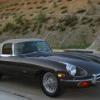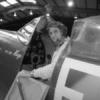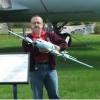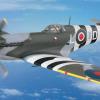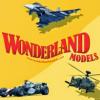Search the Community
Showing results for tags '1/32 scale'.
-
Time to return to 1/32nd scale.... Am impressive kit, finely moulded in a hardish grey plastic. Why build a model of an aircraft that was built in small numbers and didn't last much beyond 1944? Because it somehow captivated me ever since I built the old Airfix Kit back in my youth. The originals were built locally in Yeoville and but for the non availability of Rolls Royce Peregrine engines it might have been in service before the war started: with a pair of Merlins it might have been as good as the DH Hornet. This project has also been a source of inspiration... https://www.whirlwindfp.org/ Another 1:1 scale kit. The videos are all worth watching. On with the build! The instructions are clear...to a point. They assume the modeler has a degree of knowledge and experience. The cockpit is the start..... There are very few positive location points and great care is needed, as in step 4 where the two bulkheads have to be glued into the fuselage before much else goes in. Looking at the cockpit of the actual aircraft the layout is chaotic, with instruments here and there. The moral has to be test fit, sand if needed and test again! The paint is Tamyia interior green, it mat be a bit dark when compared with the paint used on the replica..... The project's website has many videos, No 14 is particularly good at this stage as it details the cockpit fit out. More over the next few weeks...!
- 34 replies
-
- 16
-

-
- 1/32 Scale
- Special Hobby kit
-
(and 1 more)
Tagged with:
-
This is Hurribomber BE687 of 175 Squadron based at Warmwell in Dorset in 1942. She was flown on the ill-fated attack at Dieppe in August, her pilot was D L Stevenson, “Steve”. He was hit by flak, baled out and rescued by a Polish destroyer….back flying the next day! The Revell Hurricane IIB is an excellent kit; well designed and accurate, a real pleasure to build. I have used though CMK weighted wheels, an AIMS prop ans Air Master gun barrels. The 250lb bombs and carriers don’t come with the kit but were supplied by a clever 3D printing friend. More pics:
- 16 replies
-
- 44
-

-

-
- 1/32 scale
- Warmwell
-
(and 1 more)
Tagged with:
-
I'd like to offer my latest completed kit for inspection: the Hawker Hurricane Mk1 flown by P/O Paul Ritchie, No 1 Squadron. First, the man and his aircraft: It was reading his book "Fighter Pilot" that inspired this build.... in 1969.....!! His aircraft, Hurricane L1697 was one of the first production batch, built by Hawkers at either Kingston upon Thames or at Brooklands in 1939 and was the 150th Hurricane built. As with all the first order, she was built with a 2 blade Watts propeller and fabric wings: the first 430 Hurricanes were so assembled. She, along with many other fabric winged aircraft were later fitted with metal wings at RAF MUs, before being assigned to a squadron: photographic evidence is equivocal, at least one photo shows gun rearming panels that look like those on a metal wing. She was allocated to No 1 Squadron at Tangmere Airfield and was marked with Squadron Codes JX and the individual letter G. Pilot Officer Richey was posted, in March 1939, to No.1 Squadron based at Tangmere, flying Hawker Hurricanes and G was assigned to him. Richey’s wonderfully written book, Fighter Pilot was written during the war, I am lucky enough to have an original “Censored” edition, where all the pilots names are replaced by either nicknames or Christian names. Compared with the last edition, published just after his death in 1989, there is also a lot of detail that has been censored. When the Revell kit appeared in 1969 I decided to build a model of Richey’s aircraft! On Friday 8th September, 5 days after the declaration of war, No1 were ordered to France as part of the air component of the BEF, where they flew patrols from their base at Vassincourt for the duration of what became known as the Phoney War. The squadron codes were over painted, leaving only the aircraft letter and “French” style rudder markings applied. It is unclear if the serial number was over painted, on some photographs of No 1 Squadron Aircraft there is no sign of the serial number but painted in black on dark green fabric it would not have stood out anyway. The A/C is believed to have had black/white/Aluminium under surfaces, but again the evidence is not firm. During this period, Richey experienced combat for the first time, and scored his first victory, downing an Me109 on the 29th March 1940. In early April 1940 the 2-blade propeller disintegrated at 25,000, Richey made an uneventful landing back at base. Later in the month Richey landed at the French Air Force base at Charleville-Mézières to refuel after combat. Avoiding bomb craters, he damaged a wing tip and had to leave his faithful G with its Red Spinner to be repaired. Three days later whilst the RAF repair team were at the airfield an attack by the Luftwaffe destroyed all the aircraft on the field, including “G” That was the end of L1697. I started building this model in 1969, just after it was released… the roundels are hand painted, only the A/C letter, serials and stencil markings are modern transfers. I have applied some weathering as during 1939/40 the airfields in France were rough, grass strips and both mud and then dust were problems. The photograph above of Paul suggests I may have not applied enough mud.... Early Merlin engines were not that oil tight, so some oil marks and of course some exhaust staining. The Revell kit has/had some issues, most noticeably around the cockpit glazing, which works out at about 6” thick, the propeller spinner, which is way overscale and the lower nose, which lacks that gentle curve-and-dip look to the underside of the nose. Because I didn’t know what I know now I fitted the 2 bladed Watts propeller which solved the spinner issue, and white metal U/C legs as the originals were very brittle. I couldn't come up with anything straightforward to deal with the nose so otherwise the kit is as it was, back 45 years or so ago. I recently replaced the canopy; like the original was, it is thin and flexible! So, we have a model of an aeroplane that most probably should have fabric wings, which is a bit unfortunate. Why did the build take so long? I was still at school when the kit was released but had already begun to be distracted by girls. University followed in 1970, with more girls, then cars followed by work, family and life in general pushed modelling into a corner. I made a few kits and added to the stash, but a number were started nut not finished. Now retired I’m a “Seenager”, able to do what I want, when I want. So, it is back to working at my model bench listening to music. I’m pleased with the model, yes it could be better but I think it captures the look of the time. This is the link to the Work in Progress Thread... And these are the photos of the result.. let me know what you think! So there we are, started in 1969, finished in 2020... is this a record?
- 21 replies
-
- 45
-

-
Now the 16 Squadron PRU pink project is done and dusted, I'm bursting with excitement to exit my self-imposed Spitfire-fan boy basement and start on a BF109 pair. It's another subject matter I'm starting from almost zero knowledge on. I'm really hoping I can entice you on this journey. I've never been that into the opposing stuff - mainly for cosmetic reasons - until I saw this remarkable Paddy Patrone You Tube video that perked my attention up. Featuring a gorgeous restoration G14, with the one-piece Erla rear canopy that really enhances the BF109 look, to my eyes. Research revealed this Erla Haube is found on many late model BF109Gs, even sometimes when the airframes weren't assembled in an Erla factory. I'm in, I thought. Then the minefield that is the BF109 G series began. The other stipulation is, I wanted to do another monotone project. It is said that there are no coincidences, because with that thought in my head, quite soon a couple of BF109 RFIs popped up for inspiration that fitted the bill: @Zigomar's G6 AS flown by JG1 and then soon after I saw @Nanond's G6 AS flown by N JG11. My shopping journey began soon after. A little too soon, probably. I've received a bit of help with the kit research ( thank you). One of the kits I bought prematurely couldn't be adapted easily to suit my original plan to build G6 AS s. Building in my preferred scale of 1/32 limits choice to some extent, if wanting to be super-picky on such accuracy. I.E. to be accurate. I'm not too bothered as I've found a solution I can live with: both monotone schemes. One is a G5/6 depending on the source. The other is a G10. But I could be wrong, who knows🤫 As I said G series is a minefield, and a lovely one at that. The gorgeous kits and AM parts The Revell kit can be made into a late-style G6. With the all-important-to-me Erla canopy. My experience building Revell Spits looks fairly well replicated with this kit. Quite simple, reasonable shape, no engine, decent cabin detail that will respond nicely to a Quinta 3D decal set and some Eduard resin wheels. I'm going for the Herman Graf scheme W NR 15 729. He's fairly well documented, being a super high scoring ace, and married a German pre-war film star, in 1944. Also he was a fanatical footballer, playing in goal to a high standard. He insisted on most of his football team transferring with him when he had to move to a new post. This included some former national football team players he found roles for on his support team. His personal story became quite controversial - and sad - after the war ended, because he was handed over to the Russians by American forces. This scheme is interesting in that the G5 was normally pressurized to fly at high altitude but it's possible some airframes were modified to a G6 spec. The giveaway could be that the Erla canopy wasn't pressurized. I'm happy to be wrong on that, and if you know, please would you kindly jump on the comments to benefit anyone else researching this stuff. For me, I'll build the Revell kit into this colour scheme as it's close enough in accuracy not to put me off. Marc-Andre Haldimann has some excellent reference image for anyone looking at the period. The photo below is linked from his Flickr account showing the above scheme for W NR 15 729 taken sometime after 11 November 1943, according to the caption. Our man is in the middle here I've included N JG11 references. 'Nacht Jagdgeschwader' is 'night fighter' in German. Another N JG11 scheme is for the G10 I'm building from the Trumpeter kit. This is a new experience for me. A look in the box is a pleasant surprise. The box itself is substantial. Cheaper than the Revell, the kit includes photo-etch, rubber tyres, 3 paint schemes and almost a complete inner assembly: engine, central firing MK108 30mm cannon by the look of it, the cockpit, even the fuel tank behind the pilot. Mostly this cannot be seen and at the moment I'm not sure if I want to have the engine displayed. Its nice to have a choice. A Quinta 3D enhanced cockpit is available, but I might not bother. We'll have to see. Here's the scheme for the G10, white 44 That's all for now. Comments and contributions appreciated.
- 121 replies
-
- 14
-

-
- BF109 G
- Erla haube
-
(and 1 more)
Tagged with:
-
Initial pictures of my recently completed Hawker Demon: Build thread not I'm afraid on this Forum but here if anybody's interested. Max
-
It took a long time to arrive, I suppose that goes for lots of Brummie buses, I bet we Brummies all spent lifetimes getting soaked before the bus came. Based around photographs of horse drawn transport in Birmingham at the turn of the (19th/20th) century this is the end of a long felt wish for a bus to join the rest of my horse drawn fleet. The trip to Edgbaston from 'town' is now on. The harness uses buckles printed to add sparkle to 1/32 or 54mm figures, made by Aber and VModels in eastern Europe and I thank them for making my life easier than when I built my Hansom cab. Put a little life into the shot. And The long winded build is over there at (or near) Thanks for taking the time to look amigos.
-
I've just received the book by Neil Robinson and published by Wing Leader as Archive 19. Neil has done a stand out job annotating and describing the photographs. As so few Whirlwinds were produced the number of quality photographs is amazing. The book lists all the aircraft produced and includes a number of colour profiles. I've just re-visited the SH kit I sourced when it came out, it has spent 2.5 years on my "pending" shel, but the arrival of the book has made me want to get on with the kit. For some inexplicable reason I've had a soft spot for the Whirlwind since building the Airfix 1/72 scale one many years ago. First impression of the jit is that whilst it looks about right there are a couple of serious "kit" issues. The kit doesn't allow positioning of the flaps and without being able to set the flaps and nacelles in the down position the radiator doors must be shut as they were interconnected. Photographic evidence suggests that the flaps fell down as hydraulic pressure bled off. Correction would require major surgery. Next all the cockpit frames have indentations when they should be holes, punched out to lighten them. Last, the lack of a detailed cannon bay is disappointing. The colours used by Westland are after changing from dark earth to grey are non standard due to lack of paint. The ocean grey was mixed from sea grey and black, and sky was a MAP blue shade, not the greenish Sky. There is one photo which suggests part had been painted with mixed ocean grey and part with official ocean grey, of that two mixed batches had been used, with a bad match! A final point is that the external plating on the wing tanks seems rather overdone, when compared with photographs. Has anyone else worked on this kit? I'll report on this as I check fit, and so on, then start a "Work in Progress" post.
- 11 replies
-
- 2
-

-
- RAF 1942
- Whirlind Mk 1 Fighter
-
(and 1 more)
Tagged with:
-
I can't think of a kit that has given me more satisfaction, my thanks to those of you who helped me along the way with your comments. Build thread:
- 33 replies
-
- 69
-

-

-
- Silver Wings
- 1/32 scale
-
(and 1 more)
Tagged with:
-
Hello all, I started a new project last week: the brand new 1/32 scale Westland Whirlwind. Although the kit comes with the best looking instructions I've ever seen, I'm somewhat suspicious about the colour call outs. Some question for all those who might have knowledge on the subject. Here we go. Question 1: what is the correct colour for the wing internal structure in the radiator bay? This photo suggests that it was painted with aluminium or with dark gray primer. The instructions give Grey-Green. Other photos show that all internal structures in the nose were aluminium coloured. Question 2: What is the correct colour for the landing gear bays and door interiors? Only a couple of photos show the landing gear bay doors. They look very light. Painted perhaps with aluminium or even with Sky. Again instructions give Grey-Green. Question 3: What was the colour of Code Letters on HE-J? Sky or Sky Blue? Decals are rather dark gray; the closest equivalent is Sky Grey in RAF Museum's colour chart. Painting instructions state that they were painted with Medium Sea Grey. This photo shows both HE-J and an earlier example HE-V. It is clear that the earlier aircraft carried darker code letters. Thank you in advance for your input. Cheers, Antti
- 16 replies
-
- Special Hobby
- Whirlwind
-
(and 1 more)
Tagged with:
-
- 27 replies
-
- 45
-

-

-
- 1/32 Scale
- Sea Eagle Missiles
-
(and 1 more)
Tagged with:
-
Hi guys I now have the replacement canopy sets for the Tamiya kits available This set ended up being a little more tricky than first thought, but I am pleased with the results in the end, you now have three clear resin cast parts, two separate support frames and the canopy supporting cylinders in two alternative lengths for both the front and rear canopies, all supplied as 3D printed parts. Note use the frame part between front and rear canopy from the kit. https://aerocraftmodels.bigcartel.com/product/mcdonnell-douglas-phantom-replacement-canopy-set-for-tamiya-kits
-
- 6
-

-
- Phantom
- clear canopies
-
(and 1 more)
Tagged with:
-
Greetings! Recently completed with lighting and display base. Polar Lights/Round 2 have done an excellent job with this kit. Details of WIP can be found here: https://www.britmodeller.com/forums/index.php?/topic/235081033-star-trek-galileo-shuttle-craft/ Many thanks for having a look, questions and comments always welcome. Cheers, Bill
-
This is my latest Victim, I like to build my kits in threes following a certain theme, this time Japanese WW2 subjects so this is the last build after the Hayate and the Raiden. After building those two my meager knowledge of things Japanese has increased but not by much. Building those two has fired up my enthusiasm for WW2 Japanese subjects and in the future I will return to build more. So on with the show, here is the kit. And here are my reference books, though my main reference is as usual the Aviation of Japan blog. it is telling that I have more reference books on the Spitfire than I have on all of the Japanese WW2 aircraft combined. After a bit of modellers block while building the Raiden I decided to start building this one in the background so it is rather more advanced than it seems. Aftermarket is limited to RB Productions seat belts and paint masks from Maketar as I do not like or am any good at applying decals I prefer to paint markings. Cheers Dennis
-
Greetings, My first ever Star Trek model. I vividly remember watching the television debut as a lad ( I was 7 years old in 1966), but in the subsequent decades never built a Star Trek model! Well. never too late to do one now. The new Galileo shuttle craft from Polar Lights is very well engineered and comes together so very nicely. One of the best styrene kits I have ever encountered. Attention to detail and parts fit is superb. I wanted to build this kit with plenty of lights and a display base that included buttons, graphics and lighting using something that I have had laying around for years. Please note that I am not a Star Trek expert in any way and there are probably many glaring aspects of this build that are probably "just not right", but I decided to do this my way and just enjoy the kit. So, this is where I am currently in the build - about 80% completed . . . . . This is where it all started - with a steel front panel from some old piece of computer hardware that caught my eye as a potential display base many years ago . . . . This then began my first model adventure into the world of Star Trek. Following are some images of how I went about this challenge... Cutting a wire channel into the nacelle supports for the lighting... Modifications to the nacelles for lighting . . . A closer view . . . Nacelle domes misted white on the inside and dry fitted . . . Nacelle lighting test - they actually look a bit more greenish. Never lighted in the original TV series, I just could not put an LED in these . . . Rear impulse engine light blocking box and secret L.E.G.O. interior light stand fixture . . . . Light test of the impulse engine - bright white LEDS with blue lenses . . . Another view . . . Modified kit forward head lights . . . Light test . . . Styrene added around hatch to block light leaks . . . Secret L.E.G.O. interior light stand in place . . . Impulse engine light box in place. . . That's all for now, much more coming soon. Your questions and comments are always welcome. Many thanks for having a look. Cheers, Bill
-
The Roden SPAD painted in the markings of B3504, 23 squadron RFC. I added a few bits and pieces to the kit to "anglicise" it - wicker seat and lap belt, British style Lewis gun and ejector chute, fabric stitching (decal) on the port side of the fuselage and pitot tube fixed to the outside strut. Thanks for looking.
-
Evening All, I have been through a complete loss of mojo recently: after completing the Dornier Rs II and base I was looking for a similar challenge and I had tried to continue with a 1/72 scratch build of an FE 2d, (an FE 2 with a Rolls Royce Eagle engine instead of a Beardmore), which I have been working on for about a year, but when I found that I will probably have to make a new nacelle I simply baulked at the idea: no particular reason why, just the thought was enough to put me off. I then floundered around with several different ideas and decided that perhaps a change in scale might offer a new challenge. This would mean that I would be abandoning the Sacred Scale, but I am determined that I will return to it in future as I have many interesting subjects on my “to scratch-build” list that I wish to make. I was looking for a subject to scratch build of course, and rapidly came to the (for me), obvious conclusion that it would have to be a pusher of some kind. I looked up several types but kept finding that I lacked enough information concerning the details of engines or interiors as I was thinking of 1/32 scale where details matter. In 1/72 scale I can make parts from drawings that look right, but in this larger scale I would need accurate 3D drawings and other information, and for many of the types that I considered such information could not be found. I also had the feeling of “done that” for some of the subjects I was researching. I do not usually like to make the same subject twice which may have been why I was put off the FE 2d - it is too much like the F E 2b, which I have already made. Then I happened to find a cut-away drawing of the Vickers FB 5 Gunbus. A couple of years ago it had been suggested to me that I try a cut-away model but to do this in plastic in 1/72 scale would be very difficult and probably leave a weak model. There are several cut-away model kits in PE in 1/72 scale but I do not like PE and I am not a kit builder any more, so that idea was a non-starter. But what about a cut-away in 1/32 scale? Problem: the engine. I can scratch build or convert engines in 1/72 scale and just get away with it, but that would not be possible in this scale, so I looked around to see what engines were available as aftermarket items. I went back to some earlier ideas and thought about either a DH 1A or the FB 5 Gunbus as engine kits are available for both. In the end I decided that I could not find enough information on the interior of the DH 1A so I settled for the Gunbus. I have built a Gunbus in 1/72 scale already - it was a conversion from an Airfix DH 4 but it was one which I started in 1981 and finished 31 years later! I am not planning to take quite so long this time…. This will be a CBSB (Classic British Scratch Build), - a basic, limited run kit with some aftermarket parts. As it will be a partial strip down the parts count will probably be quite high. I frequently leave my models unarmed but on this occasion I decided that I would model an early variant with the Vickers mg so I bought one of these from Gaspatch: it is resin. I also needed an engine - a 100hp Gnome rotary to be precise, and Wingnut Wings make a beautiful aftermarket specimen for an affordable price. ( Another difficult item to model is the wicker seat for the pilot but I found that Baracuda make one of these in resin. These three items are all little gems in their own right. Finally I have bought some PE instrument bezels, (I only have to cut and fit these so I can just about manage), and transfers from Airscale for the instrument faces. The remainder of the kit will be made from the usual plastic sheet, rod, strip, wood, brass bar for the wing spars and rod for the fuselage frame and booms. The fuselage nacelle of the Gunbus was made from steel tube, as were the booms, so I am going to have to learn how to solder brass rod and bar as CA will not be strong enough. My intention is to make a model that looks similar to the drawing I found on the net, with half of it cut-away showing the underlying structure, and the other half covered. I scaled up the plans from the DataFile number 56 and ordered some plastic strip from my LMS so that I could make the wing ribs. That was a mistake: after a month the shop had still not been able to get the strip, so I cancelled the order and got some in three days by post. I will not be using my LMS in future unless they have the items I need In stock, which is annoying because I like to support local traders: unfortunately that one will not be getting much of my custom in future. While waiting I had tried to make wing ribs from bass wood but these were not particularly good - I could not make the triangular hole at the front end and the very narrow slot at the rear, and cutting square holes for the spar to go through also proved to be almost impossible, so I intend to use 180 x 40 thou plastic strip instead. In all I have had a frustrating month ordering parts and supplies but getting almost nowhere in terms of actually making anything, except that I did manage to carve a propellor. This was made from 2 pieces of hardwood, (I know not of what type), which I regularly use for propellors. Gunbus propellors seem to have been coated in a dark varnish and this wood is just the right colour. The kit propellor (grey) is an example from a Wingnut Wings kit which was Kindly lent to me by fellow modeller Epeeman. The first shot simply shows the wood: This shows the wood being carved - the blade on the left has been shaped, the one on the right has not - taken from the side of the propellor. The extra thickness for the boss was unnecessary and was removed: The completed propellor - still to be varnished and a boss added: So after all the frustrations and stop-starts of the past couple of months I have at last begun a project which I hope will bring some results in the not too distant future…… Thanks for looking. P
-
I am making a solid hull model of the Bruno Stillman 55 crab fishing boat as a gift for my nephew who is owner/captain of the Paula-Nicole. I require a top view/drawing to determine the shape of the hull. I have decent photos of the side view and several close up shots out of the water.
- 3 replies
-
- 1
-

-
- Bruno stillman 55
- hand carved
-
(and 1 more)
Tagged with:
-
Hello Chaps, Since completing my Monogram Pro-Modeler 1/48 scale Heinkel He 111H-22 and enjoying every minute of the build, along with the end result, I wanted to do another German Bomber, either the Ju 88 or the Do17. Very kindly, one of my YouTube viewers sent me this kit- the Revell Pro-Modeler 1/32 Junkers Ju 88A-1 Bomber, for which I was extremely grateful! So, without further ado, let's get onto the introduction: The kit comes in a sturdy two piece lid and base box with a 24 page black and white instruction booklet, a decal sheet that offers two sets of markings- one for Geschwaderstab KG 30 and one for a "Battle of Britain" version Kampfgeschwader 54, six bags of sprues; five bags containing a total of 13 grey sprues and one bag containing a single clear sprue making a total of 281 parts. This kit was originally released as a new tooling in 2008, then again in 2011 with a new box art and last released in 2013 with new box art and some new parts. This kit is the second release of 2011. The Box Art: Specification table on the side of the lid: With the lid removed one can see the contents are contained in a nice sturdy base with overlapping sides: The 24 page black and white instruction booklet: The Decal Sheet: The 13 grey sprues: The one clear sprue: So, that's the kit, let the build begin!....I have actually begun the build, I started on Monday, but I'm just getting around to posting and starting this build thread. "Build Update #1 coming very soon! In the meantime, if you'd like to see my YouTube "Build Introduction" video, then here is the link to that: https://youtu.be/jXrdga-zYG8 Thanks in advance for reading this thread, leaving any comments and for watching my video, should you decide to do so! Happy modeling and have fun! Cheers Martin
- 70 replies
-
- 4
-

-
Hello Everyone, I have just joined the forum and this is my first contribution to Britmodeller. I hope you enjoy this build thread? History: The Arado Ar 196 was a shipboard reconnaissance low-wing monoplane aircraft built by the German firm of Arado starting in 1936. The next year it was selected as the winner of a design contest and became the standard aircraft of the Kriegsmarine (German navy) throughout World War II. Design and development In 1933, the Kriegsmarine looked for a standardized shipboard reconnaissance aircraft. After a brief selection period, the Reichsluftfahrtministerium (German Air Ministry, RLM) decided on the Heinkel He 60 biplane. This was one of a line of developments of a basic biplane airframe that appeared as a number of floatplanes, trainers, and fighters. Deliveries started in a matter of months. By 1935, it was found that the He 60's performance was lacking and the RLM asked Heinkel to design its replacement. The result was the He 114. The first prototype was powered by the Daimler-Benz DB 600 inline engine, but it was clear that supplies of this engine would be limited and the production versions turned to the BMW 132 radial engine instead. The plane proved to have only slightly better performance than the He 60, and its sea-handling was poor. Rushed modifications resulted in a series of nine prototypes in an attempt to solve some of the problems, but they didn't help much. The Navy gave up, and the planes were eventually sold off to Romania, Spain and Sweden. In October 1936, the RLM asked for a He 114 replacement. The only stipulations were that it would use the BMW 132, and they wanted prototypes in both twin-float and single-float configurations. Designs were received from Dornier, Gotha, Arado and Focke-Wulf. Heinkel declined to tender, contending that the He 114 could still be made to work. With the exception of the Arado low-wing monoplane design, all were conventional biplanes. That gave the Arado better performance than any of the others and the RLM ordered four prototypes. The RLM was also rather conservative by nature, so they also ordered two of the Focke-Wulf Fw 62 design as a backup. It quickly became clear that the Arado would work effectively, and only four prototypes of the Fw 62 were built. The Ar 196 prototypes were all delivered in summer 1937, V1 (which flew in May) and V2 with twin floats as A models, and V3 and V4 on a single float as B models. Both versions demonstrated excellent water handling and there seemed to be little to decide one over the other. Since there was a possibility of the smaller outrigger floats on the B models "digging in", the twin-float A model was ordered into production. A single additional prototype, V5, was produced in November 1938 to test final changes. 10 A-0s were delivered in November and December 1938, with a single 7.92 mm (.312 in) MG 15 machine gun in the rear seat for defense. Five similarly equipped B-0s were also delivered to land-based squadrons. This was followed by 20 A-1 production models starting in June 1939, enough to equip the surface fleet. Starting in November, production switched to the heavier land-based A-2 model. It added shackles for two 50 kg (110 lb) bombs, two 20 mm MG FF cannons in the wings, and a 7.92 mm (.312 in) MG 17 machine gun in the cowling. The A-4 replaced it in December 1940, strengthening the airframe, adding another radio, and switching props to a VDM model. The apparently mis-numbered A-3, which had additional strengthening of the airframe, replaced the A-4. The final production version was the A-5 from 1943, which changed radios and cockpit instruments, and switched the rear gun to the much-improved MG 81Z. Overall, 541 Ar 196s (15 prototypes and 526 production models) were built before production ended in August 1944, about 100 of these from SNCA and Fokker plants. The Ar 196C was a proposed aerodynamically-refined version. The Ar 196C project was cancelled in 1941. Operational history An Ar 196 on board the German cruiser Admiral Hipper The plane was loved by its pilots, who found it handled well both in the air and on the water. With the loss of the German surface fleet, the A-1s were added to coastal squadrons and continued to fly reconnaissance missions and submarine hunts into late 1944. Two notable operations were the capture of HMS Seal, and the repeated interception of RAF Armstrong-Whitworth Whitley bombers. Although it was no match for a fighter, it was considerably better than its Allied counterparts, and generally considered the best of its class. Owing to its good handling on water, the Finnish Air Force utilized Ar 196s just for transporting and supplying special forces patrols behind enemy lines, landing on small lakes in remote areas. Several fully equipped soldiers were carried in the fuselage. Arado in Allied hands Arado AR196 naval reconnaissance floatplane in the collection of the Bulgarian Air Force Museum at the airport in Plovdiv. The aircraft is the pride of the director, who is seen in the foreground. Previously, this seaplane was at the Marinemuseum in Varna, but was returned to the Air Force Museum for lack of space The first Arado Ar 196 to fall into allied hands was an example belonging to the German cruiser Admiral Hipper, which was captured in Lyngstad, Eide, by a Norwegian Marinens Flyvebaatfabrikk M.F.11 seaplane of the Trøndelag naval district on 8 April 1940, at the dawn of the Norwegian Campaign. After being towed to Kristiansund by the torpedo boat HNoMS Sild, it was used against its former owners, flying with Norwegian markings. At 03:30 on 18 April, the Arado was evacuated to the UK by a Royal Norwegian Navy Air Service pilot. The plane was shortly thereafter crashed by a British pilot while on transit to the Helensburgh naval air base for testing. At the end of the war, at least one Arado Ar 196 was left at a Norwegian airfield and kept in use as a liaison aircraft by the Royal Norwegian Air Force for a year on the West coast. Former military operators Bulgaria- Bulgarian Air Force Finland- Finnish Air Force Germany- Kriegsmarine Luftwaffe Norway - (captured)Royal Norwegian Navy Air Service, Royal Norwegian Air Force Soviet Union- Soviet Air Force, Soviet Naval Aviation Aircraft on display Ar 196 A-3An aircraft operated by the Bulgarian Air Force is displayed at the Museum of Aviation and the Air Force, Plovdiv, Bulgaria.Ar 196 A-5, Werknummer of 623 167An aircraft that formerly equipped the German cruiser Prinz Eugen is in storage at the Paul Garber Facility of the Smithsonian's National Air and Space Museum, and awaiting restoration. Ar 196 A-5, Werknummer of 623 183Another aircraft from the Prinz Eugen was displayed from 1949 to 1995 at the Naval Air Station Willow Grove, Pennsylvania and subsequently transferred to the National Naval Aviation Museum in Pensacola, Florida. The upper fuselage and canopy were damaged during transit, and it remained in storage awaiting restoration. In December 2012, it was packed into containers and shipped to Nordholz, Germany. Restoration began in August 2013, in time for that city's celebration for 100 years of German naval aviation. The plane, on long term loan from the National Naval Aviation Museum, will eventually be displayed at the Naval Air Wing 3 (Marinefliegergeschwader 3) headquarters at Nordholz Naval Airbase. The Aircraft Historical Museum, Sola, Norway, has on display an Ar 196 A-2 fuselage frame raised from the wreck of the German cruiser Blücher in Oslofjord. Another aircraft is known to lie in the Jonsvatnet, a lake near Trondheim in Norway. A number of wartime German aircraft have been recovered from the lake, but the Ar 196 remains undisturbed as its crew were killed when it crashed there in 1940 and it has the status of a War Grave. A wrecked Arado Ar 196 A-3, believed to be D1 + EH, was snagged by a fishing trawler off the island of Irakleia in 1982 at a depth of 91 meters. It was towed out of the fishing lanes to shallower waters (about 11 meters). The upside down plane, with fuselage and wings mostly intact, has become a popular spot for Scuba diving. Specifications (Ar 196 A-2) General characteristics Crew: Two (pilot and observer) Length: 11.0 m (36 ft 1 in) Wingspan: 12.4 m (40 ft 0 in) Height: 4.45 m (14 ft 7 in) Wing area: 28.4 m² (306 ft²) Empty weight: 2,990 kg (6,592 lb) Max. takeoff weight: 3,720 kg (8,200 lb) Powerplant: 1 × BMW 132K 9-cylinder radial engine, 960 PS (706 kW, 947 hp) Performance: Maximum speed: 311 km/h (193 mph) Range: 1,080 km (670 mi) Service ceiling: 7,010 m (23,000 ft) Rate of climb: 300 m/min (980 ft/min) Wing loading: 98.2 kg/m² (20.1 lb/ft²) Power/mass: 167 W/kg (0.101 hp/lb) Armament: Guns: 1 × 7.92 mm (0.312 in) MG 15 machine gun 1 × 7.92 mm (0.312 in) MG 17 machine gun 2 × 20 mm MG FF cannons Bombs: 2 × 50 kg (110 lb) bombs The Box and Artwork: A side panel of the box showing some of the many details included in this kit: Contained within the box are 13 grey sprues, one clear sprue, a 16 page black and white assembly, paint and decal instruction booklet and a sheet of cartograf decals. The grey sprues are divided into 5 clear polythene bags that are sealed with a strip of cellotape, and, the clear sprue is in a bag of its own. The decals are covered with a soft opaque paper sheet and inserted into the center pages of the instruction booklet. The box is one fabrication with access to the contents enabled by pulling open one of the end flaps. I much prefer the two piece box constructions with a base and a lid: Pages 2 + 3: Pages 4 + 5: Pages 6 + 7: Pages 8 + 9: Pages 10 + 11: Pages 12 + 13: Pages 14 + 15: Pages 1 + 16- the front and back pages: The 13 grey Sprues: A close up of some detail on one of the sprues: The clear sprue: And, finally, the Decal sheet: Overall, at first sight, these parts look very well engineered with zero flash, and if any, it's hardly noticeable. The details are nice and crisp, the molded parts are clean, free of warp and ejector pin marks in visible surfaces. The clear parts are thin, free of blemishes, gate blushing and/or splaying, air traps, knit and weld lines and no optical aberrations to disturb visual transparency and clarity. There's a ton of styrene for the price, the decals are very nice (cartograf), but the instructions look a little confusing in places...we'll see when we get to the build. That's my introduction done with, now onto the build! Thanks in advance for taking a look guys and commenting. Cheers, Martin
- 60 replies
-
- Float Plane
- WWII
- (and 8 more)
-
At Wonderland Models we are currently offering the fantastic range of Tamiya 1/32 scale aircraft model kits with a 15% discount!
-
Hello Chaps, It's been a long haul build- 8 weeks in total, but that is because my wife and I are actively involved with contractors working on our new home that we will be moving to in mid-April....sorting out kitchen design, wood flooring, carpeting, tiles for kitchen and bathrooms, shower designs, paint colors for every room, new faucets for all sinks, choosing granite countertops and sinks for kitchen and bathrooms, new light fixtures and door handles etc etc....I hope this is the last time we have to move now, moving is a stressful and tiring event! Anyway, enough of the waffle and lets get on with sharing photos of my completed build, which is built straight from the box, no after market additions, only using 1.010" fine black EZ-Line for the antenna cables. I hope you like.... Regarding what I think of this kit: It's a great kit that goes together well, has some nice features such as a highly detailed cockpit, pose-able ailerons, flaps, elevators, rudder and air-brakes, recessed panel lines and other surface detail. The parts were all molded very well, with minimal flash and/or parting line miss-match that required clean up before painting. It offers two sets of markings, I chose to do this version that was active in the "Battle of Britain", and the decals are excellent- they go down very well on a gloss clear coat with no silvering, and once the finishing matt clear coat was applied, they look painted on. I did come across two issues during the build: 1) When fitting the engine nacelles to the undersides of the wings, I had a considerable gap between the mating areas of the front and rear nacelles. This is discussed in my "Final Reveal" video and can be seen in my "WIP" thread....links below: 2) When fitting the wheels onto their axles, both axles sheared off very easily and remained inside the wheel mating holes. I drilled these out of the wheels and drilled corresponding holes into the wheel struts and fitted steel pins. I then took a black rubber Tamiya propeller bushing and cut it down the middle to create two thinner bushings. I slid these over the new steel axles and super glued them into place. These then provided some surface area for the wheel hubs to glue to. Again, I used CA glue to fit the wheels in place and it worked a treat, providing me with a very rigid and stronger undercarriage. WIP thread link: http://www.britmodeller.com/forums/index.php?/topic/234996419-revell-pro-modeler-132-junkers-ju-88a-1-bomber-build-update-5-31516/ My YouTube "Final Reveal" video link: This kit would be superb if it came with two completely detailed Jumo 211B-1 engines, external bomb pylons and bombs and an open bomb bay with internal bomb racks and bombs!! That would make it super eye candy and a fabulous kit to work on.....I can dream! Thanks in advance for taking a look at this RFI and for any comments left, they are greatly appreciated! In the meantime, and until the start of my next build which won't be until we have moved and settled into our new home-probably the end of April, happy modeling and have fun! Cheers Martin
- 38 replies
-
- 51
-

-
- Revell
- 1/32 Scale
- (and 8 more)
-
Hello Chaps, I'd like to share with you my completed build of the Revell of Germany newly tooled (last year) 1/32 Focke Wulf Fw190F-8. I usually complete a full build series starting with an in-box-review with updates along the way until completion, but, I've been really busy with a new house my wife and I purchased in December, and so, we're going backwards and forward with contractors. Anyway, I found myself with a spare hour and thought I'd spend it on here! I have to say, this kit is another "Great Value For Money" kit from Revell of Germany; fabulous engineering, quality molded product and a complete joy to build without the need for filler and zero fit issues and looks good built straight out of the box as I did, except for the addition of antenna cables using 1.010" black EZ-Line! Based on the cost alone....I paid $23.95 for it, which is around 16.00 quid when converted, I'd give this kit 5 stars. For everything else, 4.5 stars, just because the instructions are still in black and white, they don't provide alternative paint numbers and the box isn't a sturdy lid and base design. On with the photos, I hope you like her as much as I liked building and painting her! Well, there she is....if you'd like to watch my YouTube Channel "Build Update" and "Final Reveal" videos for this build, then here are the links to those: Build Update #1 video link: https://youtu.be/hwiTyVsZXvI Build Update #2 Video link: https://youtu.be/6hugFcFgpFA Build Update #3 Video link: https://youtu.be/vdPiuCH_0qo Build Update #4 Video link: https://youtu.be/0Bpdc0JwAh4 Final Reveal Video link: https://youtu.be/eSI_qcd9s88 Thanks in advance for taking a look at this posting, watching any of the videos and for your comments, greatly appreciated! Until next time, happy modeling and have fun! Cheers, Martin
- 26 replies
-
- 35
-

-
- Revell
- 1/32 Scale
-
(and 6 more)
Tagged with:
-
Hello Guys, This will be my first entry into the "Battle of Britain 75th Anniversary Group Build" - the Revell 1/32 Supermarine Spitfire Mk.IIa. I plan to accompany this Spitfire with the Eduard 1/32 Messerschmitt BF109E-3. Introduction to the kit: The Box Art: The Box Contents The Box Contains 3 clear bags of light grey sprues; 5 in one bag, and 4 in each of the two other bags making a total of 13 light grey sprues. There is another small clear bag containing 3 small clear sprues. There is a 12 page black and white assembly/painting and decaling instruction booklet that includes two options of paint scheme and squadron markings, and lastly, a sheet of cartograf decals; Sprues A + B: Sprues C + D + D- NO, that's not a mistake, but it is one by Revell of Germany!! I have two sprue D's which are the portside upper wing sections and no Sprue E which is the starboard side upper wing section! Aaaarrrrrggggghhhh!!! I went to Revell's website to order the missing sprue E and it can take up to 8 weeks to be delivered from Germany!!!!!????!!!! Bloody hell!! Sprue F Sprue G Sprue Q Sprue T Sprue S (x2) Sprue H (x2) Clear Sprues I, R + U A 12 page black and white Assembly/Painting and Decaling Instruction Booklet Front Page 1 and Back Page 12 Pages 2 + 3 Pages 4 + 5 Page 6 + 7 Pages 8 + 9 Pages 10 + 11 The Decal Sheet The molded parts are very crisp and clean with zero flash apart from a couple of little areas. The parts have nice fine recessed panel lines and lots of rivet details. The clear molded parts are very clear with zero aberrations except for one side of the sliding canopy which is slightly "glazed". The decals are excellent looking with zero carrier film beyond the decal edges and good register. The black and white instruction booklet appears to be clear and concise, but the two paint and decal options would be better in color. The color call outs are in Revell colors only. I will make a final report when the build is complete indicating any issues that I come across. In the meantime, thanks for taking a look and I hope you enjoy following along with my build. In the meantime, if you'd like to see my YouTube "in-Box-Review" video for this kit, here is the link: https://youtu.be/SWiiFXlU6zA Let the build begin!! Cheers Martin
- 36 replies
-
- 1
-

-
- Supermarine Spitfire Revell 1
- Revell
- (and 8 more)
-
For the conversion from D-model to C-model, I had to modify the cockpit structure. While I was at it, I remade the bulkheads to look more accurate. Look closely at the pictures and you can see the flanges. Check out the multiple methods I tried to make these parts and the one that ultimately succeeded at http://www.highflyingmodels.com
-
- p-51 Mustang
- tamiya
-
(and 2 more)
Tagged with:
-
British Paratroops Airfix 1:32 scale This is more of an experiment with painting soft plastic than a serious attempt at figures. I picked out 6 different poses from the pack of 14 figures. Cleaned them with detergent (office label remover) Filled in the dimples in the backs and filled and smoothed the moulding join line. Painted with acrylic paints. Comments on the Kit: Advantages, one-piece Disadvantages, not poseable, limitations of moulding mean some of the limbs are joined to the body where in reality there would be a gap. Sten gun muzzles are very fragile. As expected, even after cleaning there are adhesion problems with the paint, although 2 or three coats seem to work.
- 11 replies
-
- 2
-

-
- British Paratroops
- Airfix
-
(and 1 more)
Tagged with:

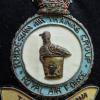
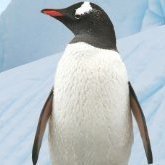

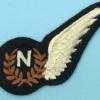
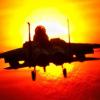
.thumb.png.6e11fc11af5645499ae76cb59fcfb788.png)
